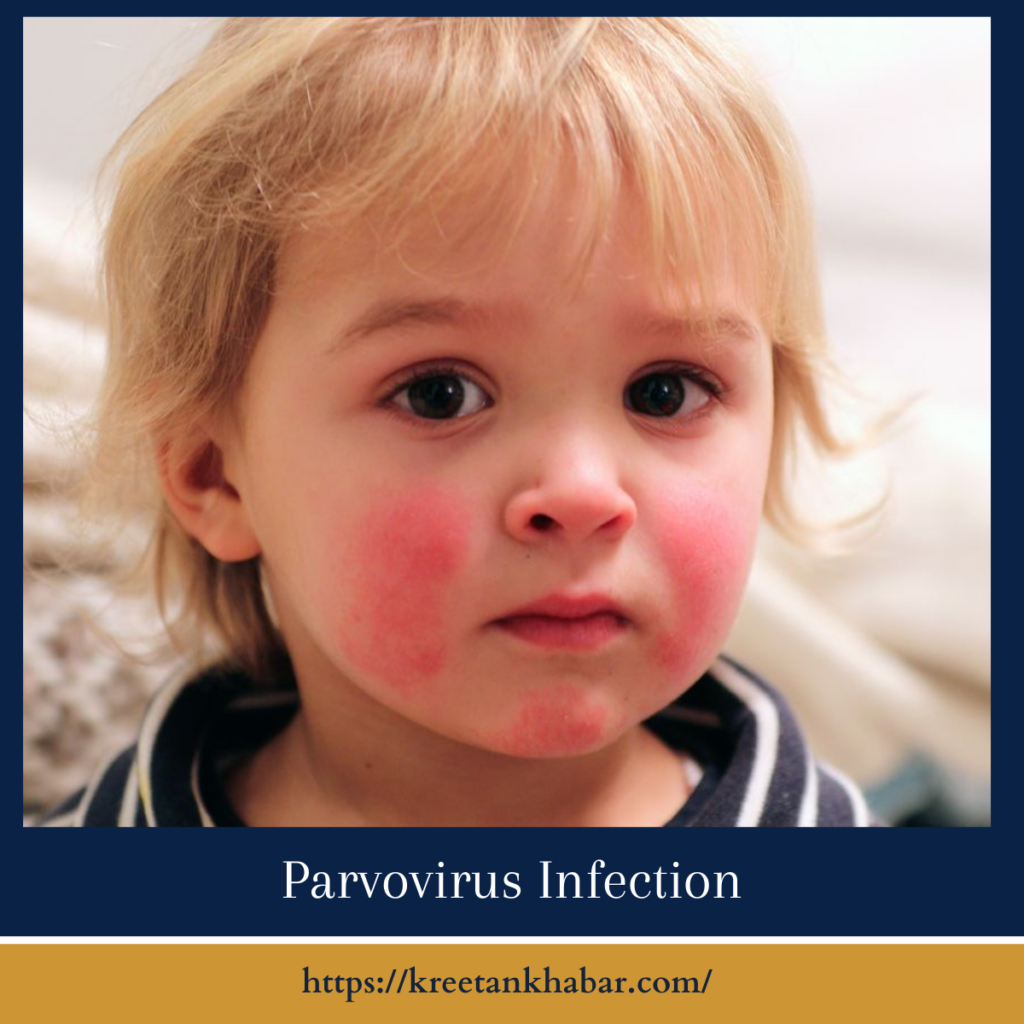Parvovirus Infection: Understanding the Intricacies of a Tiny Menace
Parvovirus infection, though diminutive in size, is a significant viral illness that can have varying impacts on human health. As one of the smallest viruses known to infect humans, parvovirus poses unique challenges and complexities that warrant exploration. From its transmission and symptoms to its implications for vulnerable populations, delving into the intricacies of parvovirus infection sheds light on its importance in the realm of infectious diseases.

Transmission:
Parvovirus infection is primarily transmitted through respiratory secretions, such as saliva or nasal mucus, when an infected individual coughs or sneezes. Close contact with an infected person increases the risk of transmission, making environments such as schools, daycare centers, and healthcare facilities particularly susceptible to outbreaks. Additionally, the virus can be transmitted through blood or blood products, although this mode of transmission is less common. Once introduced into the body, the virus targets rapidly dividing cells, particularly those in the bone marrow and developing red blood cells.
Symptoms:
The symptoms of parvovirus infection can vary depending on the specific strain of the virus and the individual’s immune response. In children, parvovirus B19 infection often presents as erythema infectiosum, commonly known as Fifth Disease. This illness is characterized by a distinctive rash on the cheeks, followed by a lace-like rash on the arms, legs, and trunk, along with mild flu-like symptoms such as fever, headache, and fatigue. In adults, parvovirus infection may cause more severe symptoms, including joint pain and swelling, particularly in the hands, wrists, knees, and ankles. However, it’s important to note that not all parvovirus infections result in noticeable symptoms, as some individuals may experience asymptomatic or mild cases of the illness.
- Slapped Cheek Appearance: Parvovirus infection often begins with a distinctive rash on the cheeks, giving the appearance of being slapped. This rash, medically termed erythema infectiosum or Fifth Disease, is typically one of the first signs of the infection.
- Lace-Like Rash Pattern: As the infection progresses, the rash may spread to other areas of the body, such as the arms, legs, and trunk, forming a lace-like or net-like pattern. This unique rash pattern is characteristic of Parvovirus infection and helps differentiate it from other viral rashes.
- Low-Grade Fever: Many individuals with Parvovirus infection experience a mild fever, typically ranging from 99 to 101 degrees Fahrenheit. While the fever is usually low-grade, it can contribute to feelings of discomfort and malaise.
- Joint Pain and Swelling: Some individuals, particularly older children and adults, may develop joint pain and swelling, known as arthralgia. This symptom often affects the hands, wrists, knees, and ankles and can range from mild to moderate in severity.
- Flu-Like Symptoms: In addition to the characteristic rash, Parvovirus infection may present with flu-like symptoms such as headache, fatigue, and sore throat. These symptoms can vary in intensity but generally resolve within a few days.
- Itching: The rash associated with Parvovirus infection may cause mild to moderate itching, particularly as it begins to fade. While itching is usually manageable, over-the-counter remedies such as calamine lotion or antihistamines can provide relief.
- Asymptomatic Infections: It’s important to note that not all Parvovirus infections result in noticeable symptoms. Some individuals may experience asymptomatic or mild cases of the illness, particularly if they have a strong immune system.
- Severity in Vulnerable Populations: While Parvovirus infection is typically mild and self-limiting in healthy individuals, it can have more severe implications for certain populations. Pregnant women, especially those in the first trimester, are at risk of complications such as fetal anemia, hydrops fetalis, and miscarriage if infected with Parvovirus B19.
- Contagious Period: Individuals with Parvovirus infection are most contagious before the onset of the rash, making it challenging to prevent transmission. Once the rash appears, the contagious period typically diminishes, although transmission can still occur until the rash fades completely.
- Resolving Symptoms: In most cases, the symptoms of Parvovirus infection resolve on their own without specific treatment within two to three weeks. However, pregnant women and individuals with compromised immune systems should seek medical advice for appropriate monitoring and management.
Implications for Vulnerable Populations:
While parvovirus infection is typically mild and self-limiting in healthy individuals, it can have more serious implications for certain populations. Pregnant women, especially those in the first trimester, are at risk of complications such as fetal anemia, hydrops fetalis, and miscarriage if infected with parvovirus B19. Individuals with compromised immune systems, such as those undergoing chemotherapy or living with HIV/AIDS, may also experience more severe symptoms and complications from parvovirus infection. Therefore, vigilance and appropriate precautions are crucial to minimize the risk of transmission and mitigate the impact of the virus on vulnerable populations.
Conclusion:
Parvovirus infection may be small in size, but its impact on human health and well-being is significant. By understanding the transmission, symptoms, and implications of parvovirus infection, we can better appreciate the complexities of this tiny menace and take proactive measures to prevent its spread and mitigate its effects. Through education, awareness, and responsible healthcare practices, we can work together to combat parvovirus infection and promote the health and safety of individuals and communities worldwide.
Read also : Exploring the Delightful Boost of the Green Tea Shot 2023